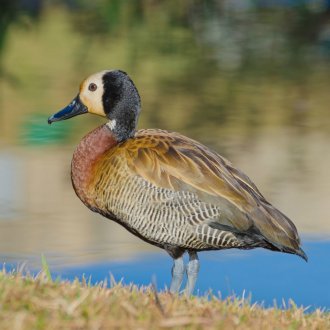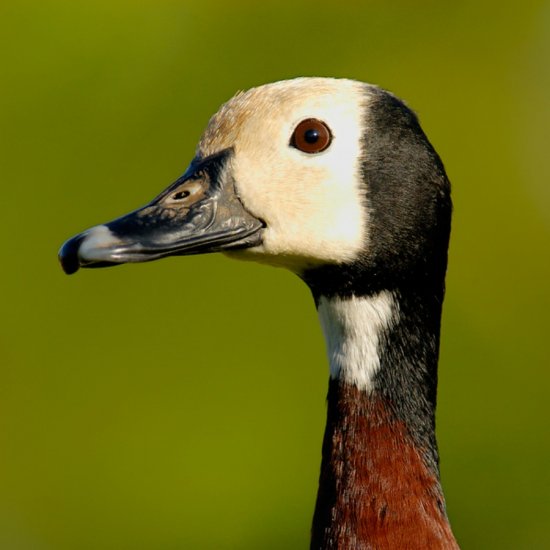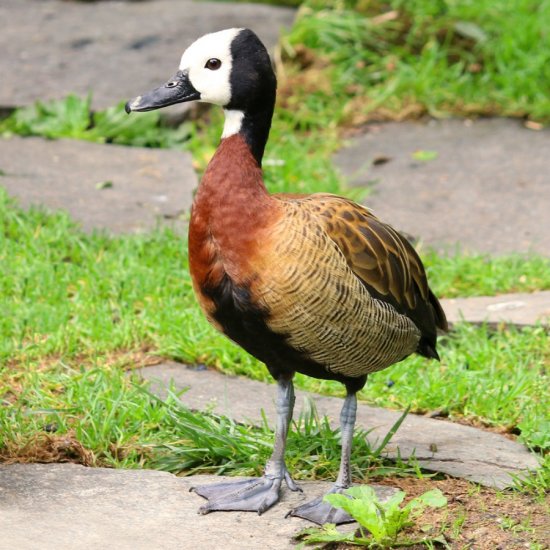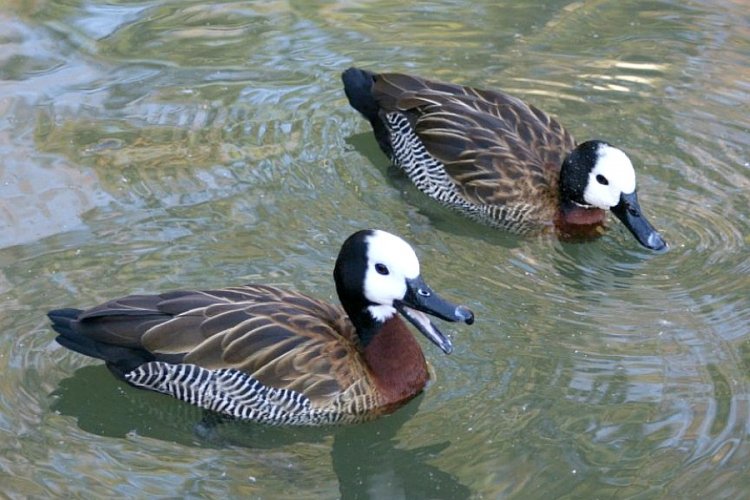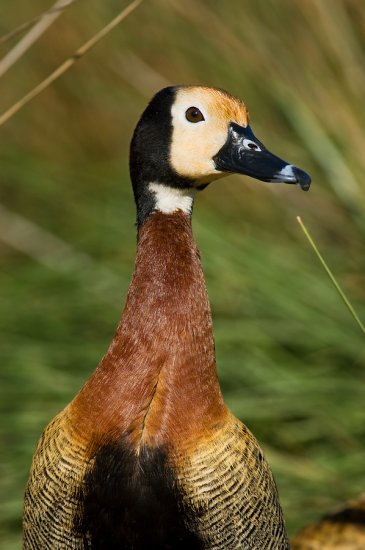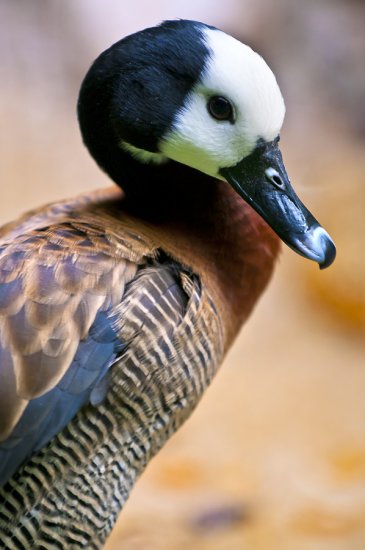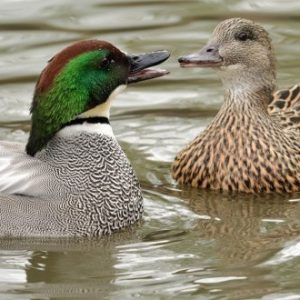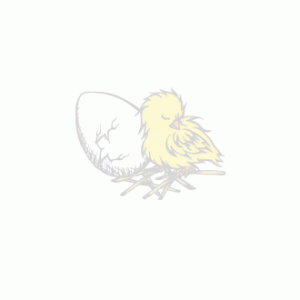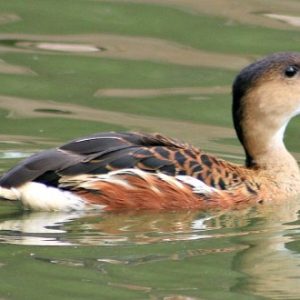White-Faced Whistling Duck (Dendrocygna viduata)
Other Names: White-faced Tree Duck
Range: The White-faced duck can be found in tropical areas of Central and South America, as well as in sub-Sarahan Africa.
Habitat: The White-faced duck is a waterfowl, and prefers still, open bodies of freshwater such as lakes, reservoirs, marshes, and river banks. It generally avoids wooded areas, but nests in areas of dense vegetation. The nest is either over or near water and is constructed of vegetation.
Description: As the name implies, this species has a white face, but the back of the head is black. It has a rust-colored breast and black and white barred sides. The legs and beak are both gray. The male and females are similar in color, though the males tend to be slightly smaller than the females. Most of the time White-faced ducks are powerful fliers, but they do undergo a brief molting period after the breeding season. They cannot fly while molting and are especially vulnerable to predators.
Status in the wild: White-faced ducks are abundant in the wild. They live in flocks and groups of 1,000 or more have been seen together at times. The International Union for the Conservation of Nature lists this species as being of “Least Concern.” Unlike many other species of waterfowl, the wild population of White-faced ducks is growing, due to the construction of artificial waterways and the farming of grain crops in the areas where they naturally live.
Status in aviculture: There are healthy wild populations and the White-faced duck is popular with people who enjoy raising wild waterfowl, so there are also abundant numbers being raised in captivity.
Breeding Season: Breeding begins with the rainy season.
Clutch Size: 8-12 eggs
Incubation Period: 26-28 days
Miscellaneous Notes: White-faced ducks are members of the genus Dendrocygna, also know as “whistling birds” which include eight species. They are called “whistling” ducks due to their distinctive calls – which have been described as “decidedly unduck-like.” The White-faced duck feeds by dabbling and wading, usually at night. It eats mainly vegetation, but also some insects and mollusks.

